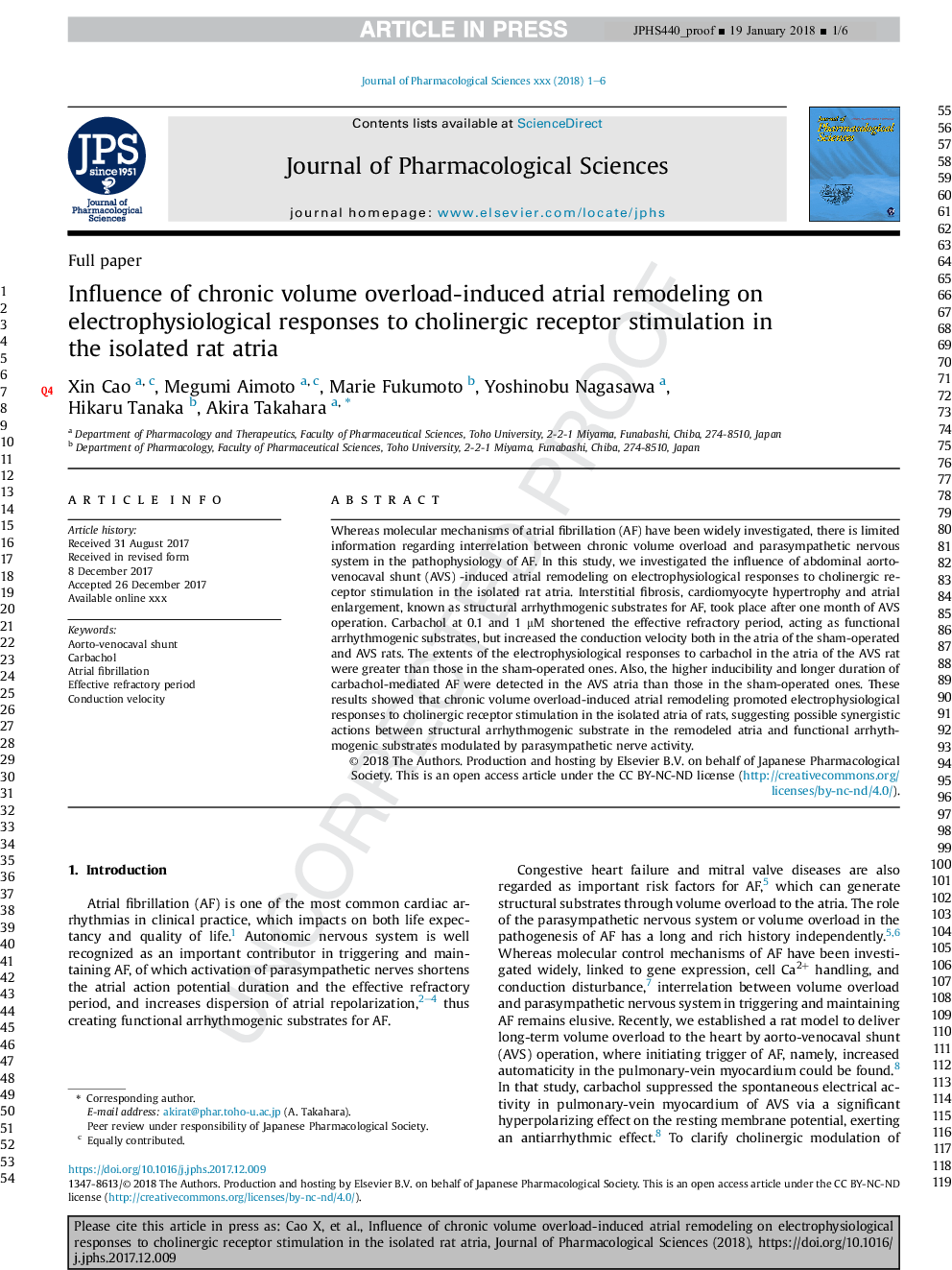| Article ID | Journal | Published Year | Pages | File Type |
|---|---|---|---|---|
| 8532918 | Journal of Pharmacological Sciences | 2018 | 6 Pages |
Abstract
Whereas molecular mechanisms of atrial fibrillation (AF) have been widely investigated, there is limited information regarding interrelation between chronic volume overload and parasympathetic nervous system in the pathophysiology of AF. In this study, we investigated the influence of abdominal aorto-venocaval shunt (AVS)-induced atrial remodeling on electrophysiological responses to cholinergic receptor stimulation in the isolated rat atria. Interstitial fibrosis, cardiomyocyte hypertrophy and atrial enlargement, known as structural arrhythmogenic substrates for AF, took place after one month of AVS operation. Carbachol at 0.1 and 1 μM shortened the effective refractory period, acting as functional arrhythmogenic substrates, but increased the conduction velocity both in the atria of the sham-operated and AVS rats. The extents of the electrophysiological responses to carbachol in the atria of the AVS rat were greater than those in the sham-operated ones. Also, the higher inducibility and longer duration of carbachol-mediated AF were detected in the AVS atria than those in the sham-operated ones. These results showed that chronic volume overload-induced atrial remodeling promoted electrophysiological responses to cholinergic receptor stimulation in the isolated atria of rats, suggesting possible synergistic actions between structural arrhythmogenic substrate in the remodeled atria and functional arrhythmogenic substrates modulated by parasympathetic nerve activity.
Related Topics
Health Sciences
Pharmacology, Toxicology and Pharmaceutical Science
Pharmacology
Authors
Xin Cao, Megumi Aimoto, Marie Fukumoto, Yoshinobu Nagasawa, Hikaru Tanaka, Akira Takahara,
